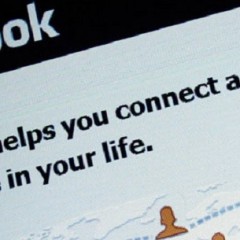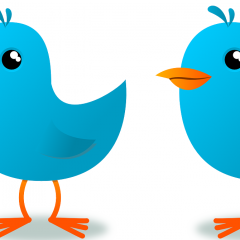Native Ad Success Requires Research and Strategy
Ads are everywhere in today’s world, and nowhere are promotional messages more prevalent than on the Internet. Until recently, online advertisements only came in the form of display units: pop-ups and banner ads that are often intrusive and only distract from the user experience. Today, a growing number of companies are choosing a more seamless, natural approach by creating and running aptly named ‘native ads.’ “Native ads appear around a webpage’s main content with a look and feel that matches the design and layout of the website,” said Ash Nashed, CEO and founder of digital media technology company Adiant. “This design makes the ad simple, unobtrusive and easier to consume than displays ads. We consider native ads a seamless preview to content and offers, and less like an attention-demanding ad that can be disruptive to consumers. These features translate into better engagement with consumers.” Native advertising is by no means a new concept. The “advertorial” — an advertiser-created piece of content designed to mimic the content a media outlet already produces — has been used in magazines, TV and radio shows for decades. But in the digital world, this type of advertisement takes many forms, and businesses that run native ads need to know which ones will be the right fit for their brand. [Creative Ways to Market Your Small Business] Aaron Goodin, CEO of content discovery and engagement platform Snap Skout, explained that there are six types of native ad formats, as published in the Interactive Advertising Bureau’s (IAB) Native […]
5 Keys to a Successful Social Media Strategy
With smaller budgets and fewer employees, small businesses must have a strategy in place in order to be effective at social media marketing. Jeremy Juhasz, a social media strategist at EMSI Public Relations, said despite the challenges they face, small businesses can find just as much success in social media marketing as large corporations do. But, in order to do so, they have to have a plan in place and stick to it. “You can succeed with social media even if your organization doesn’t have the brand recognition of a multibillion dollar corporation,” Juhasz said in a statement. “If you remain even-keeled and set realistic goals, the return on investment will follow.” Juhasz said when it comes to social media, small businesses must remember the five P’s in order to have success: Plan: Identify what you hope to accomplish and create a strategy to take you there. Too many small businesses dive into social media because they “have” to and don’t consider a plan of action before they do so. Make a list of what you want to accomplish before getting started. Patience: Nothing happens overnight. It takes time to develop relationships and establish credibility with your brand and your target audience. Over time, a steady pace will win out. Rushing leads to mistakes. The type of patience I’m referring to is a long-term mindset. When day-to-day activities seem arduous and, at times, unfulfilling, know that each day builds to the greater goal. Persistence: You must be stubbornly committed to […]
Email Blacklists 101: Key Players and How to Stay Off Them
Email blacklists (also known as blocklists or block lists) are everywhere. They rank from the formidable to the obscure. The exact number of blacklists is not fully known – there are at least hundreds. Reputable blacklists carry weight amongst the email receivers of the world and can negatively impact delivery, while other, more obscure blacklists hold little sway and do not have much of an impact on a sender’s ability to get in the inbox. With so many blacklists out there, being listed is usually a question of when and not if for most marketers. To put it bluntly, Blacklists Happen. So which blacklists should you most be concerned about and, more importantly, how can you stay off them? Let’s take a look. Blacklist Basics An email blacklist is defined as any group of IPs or sending addresses that are suspected of email spam activity. Blacklists exist to protect users from spam messages and allow legitimate email to be delivered (and get the attention it deserves). The first blacklist was created in 1997 by Internet Hall of Fame inductee (yes, that is a real thing), Paul Vixie. The “Real-time Blackhole List,” as he called it, was formed as a response to the overwhelming growth of spam that occurred during the Internet boom. With no government action on spam email taken until 2003’s CAN-SPAM Act, it was up to Vixie and other Internet titans to take up the battle. Since 1997, hundreds of other blacklists have popped up to help in the ongoing effort to curtail spam […]
Word of Mouth Still Rules for Brand Advocacy
Even if consumers really like a product or service, they’re not likely to share those feelings on Facebook or Twitter, new research suggests. Instead, social media users are more likely to express their opinions about products in face-to-face social situations, according to a new study in the Journal of Consumer Psychology. Researchers said this is because most users usually have a wide range of friends or followers on social media sites, and may not feel as comfortable expressing their opinions to these connections as they would with their close family members and friends. This lack of close connection, as well as their vulnerability to adverse comments, often deters people from sharing their opinions about brands on social media sites, the researchers said. Andreas Eisingerich, a researcher at the Imperial College Business School in London and a co-author of the study, said that social media websites such as Facebook have completely revolutionized the way consumers share information and communicate with one another. “Our report shows that when it comes to sharing recommendations on products and services on these sites, users tend to stay quiet,” Eisingerich said. “They would rather communicate via word of mouth because many users don’t want to embarrass themselves online, as work colleagues or acquaintances may not endorse or appreciate the same products that they do.” As part of the study, the researchers surveyed 407 participants in labs and face-to-face surveys to find out how they communicated about their favorite brands. They found that the participants were reluctant […]
Twitter snaps up Namo Media to dive deeper into native ads
Twitter keeps pumping money into its mobile ad business. The microblogging company today announced that it has agreed to purchase Namo Media, a native advertising startup. Neither company disclosed the terms of the deal. Back in September 2013, Twitter bought advertising firm MoPub for $350 million to begin advertising outside its own properties. Namo Media will end its autonomous operations and integrate fully with the MoPub platform, the native ad company said in a blog post. At Twitter we’ll continue to work on building the best native advertising platform for app developers with the goal of continuing to improve the native ad landscape for all mobile app developers. Combining our technology with MoPub will offer our current and future customers a more powerful platform to generate revenue, all while preserving an amazing user experience. Namo Media has focused largely on native mobile ads. That makes it a logical acquisition target for Twitter, which has a mobile userbase of around 198 million users — or around 78% of people on Twitter — according to the company’s latest earnings report. Over 75% of Twitter’s ad revenues come from mobile. Unlike banner ads, which a lot of folks have learned to ignore, native ads attempt to match the context of peoples’ experience wherever they appear, blending seamlessly with (or even mimicking) the other content. The most widespread example of native advertising is on Facebook, which inserts sponsored posts into users’ news feeds. But lots of other platforms and publishers are readily adopting the new form of marketing, because it typically offers publishers more control — and often more […]
Vocus is marketing automation for the top of the funnel, via 60M Twitter buying signals
Most marketing automation systems start with known users. Some cutting-edge new systems can also nurture unknown prospects who visit your site but choose not to identify themselves. Few, however, focus on the very top of the funnel: buying signals in social media. That’s exactly the key differentiator Vocus touts for its marketing automation system, which is almost unknown in the industry but already has more than 8,000 small and medium-sized business customers. “We are actively searching Twitter for buying signals,” Vocus product manager Anil Yasyerli told me last week. “For example, if you’re an SEO agency … there are millions of people looking for SEO help. We find these conversations that are going on and then hand them over to our customers.” There’s a reason that almost no one knows that Vocus does marketing automation. In spite of a claimed $28 million in marketing automation revenue in 2013 and a projected $40 million in 2014, the company started out as a government services agency in 1992, moved into PR in 1997, and only moved into the marketing automation space in 2011. Vocus already owned the popular PRweb press release site and the HARO (Help a Report Out) journalist service at the time, and entered the marketing technology space via acquisition of both an email marketing system and Engine 140, a Twitter social media marketing solution. All of that complicated history means that one of the mid-sized marketing automation vendors by revenue isn’t well known in the space. (By comparison, Silverpop, which IBM recently acquired, had perhaps $90 million in annual revenue, and Act-On, one […]
















